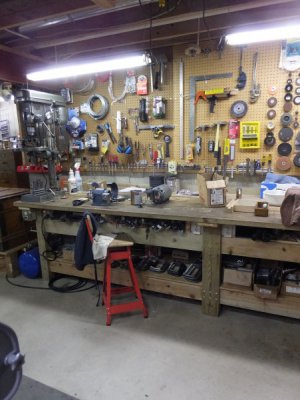- Joined
- Jul 2, 2014
- Messages
- 7,594
Regardless of the material used, make sure that there is good provision to prevent racking. Heavy timbers or steel beams will only make structures as rigid as all the corners are held square. Plywood, sheet metal, diagonal cross braces, and other ideas will make it rigid. Design them in from the beginning.


